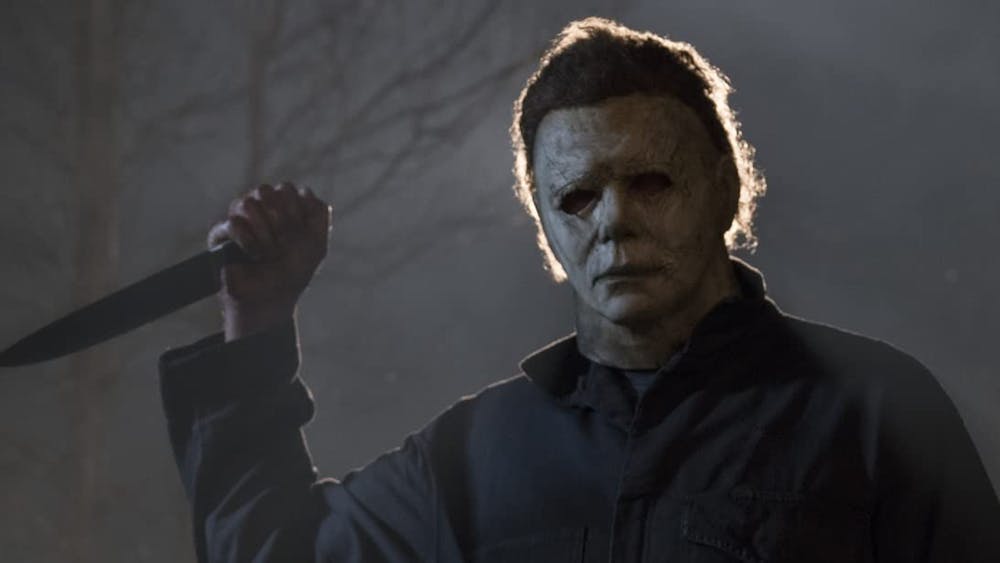The principal concern of the filmmaker is image. Story, character, even sound are all secondary to the creation of compelling images. Think of the shower scene in “Psycho” or Gene Kelly and the lamppost in “Singing in the Rain.” With their composition, these iconic images, both within and outside their original contexts, provide sensations beyond sight to the audience — touch, smell, taste, even intrigue; a sixth sense of danger and imbalance or joy and virility.
Now, think of an iconic shot from the past few years in film, particularly blockbusters: those we’re leaving behind to later generations. Our cultural footprint. Think of a shot as divorced from the context of plot as well, just what’s in the frame. Finding anything interesting? Likely not.
In recent years, the quality of visual storytelling in mainstream film has plummeted. Made-by-committee movies like “The Avengers” have taken the box office by storm, and we’ve been left to foot the bill, with a new filmic language emerging: all at once simpler and harder to understand in its lack of meaning. Genre and poorly made blockbusters have existed for years, but in the 21st century, audiences and studios have started to demand respect for them and as a result, we’re losing the diversity of shot that creates visual interest.
It would be disingenuous to compare the filmmaking techniques of a superhero flick to something like “The Graduate,” so I won’t. Those are different films with different audiences and genres, and as a result, they go for different choices. There’s value in both. But even transcending genre, we, as audiences, seem to be losing our attention span year to year, with the average shot length and characters in frame decreasing since at least the 1950s.
A lot of these issues seem to boil down to the difference between shooting film versus digital, both in terms of cost and the capabilities of the technology. For one, shooting digital is cheaper and requires less concerted lighting effort, making indecision and laziness easier and more cost-effective for studios. Digital is also better able to capture shadows, and as a result, we’re seeing darker and darker shots, such as in the much maligned “Battle of Winterfell” episode of “Game of Thrones,” in which audiences could barely discern one character from another.
A great example of this made the rounds on Twitter a few weeks ago comparing a shot from “Halloween Ends” to a shot from the original “Halloween,” in which Jamie Lee Curtis as Laurie Strode hides from Michael Myers. In the “Ends” shot, Strode and Myers are cast in shadow. A light from the room Myers is coming from provides most of the light, though there’s a general blue wash over the scene. Looking at the shot, the relationship between the characters isn’t clear and Myers isn’t scary — just a looming presence.
Now, the same shot from “Halloween,” while by no means one of cinema’s greatest films, still feels effortful and intentional in a way most movies today are not. Strode is illuminated by a nearby window, drawing focus to her fear. Myers occupies a parallel position, but simply watches, emerging from pure shadow, his body completely hidden. Add in static from watching it as originally intended on VHS, and the darkness seems to shift around him. It’s terrifying both in and out of context in a way that the recent shot could never hope to be.
The shot from “Ends” shows an indecision on the part of the filmmakers indicative of a generational issue. They want Myers to be scary, but they know he’s why people come back to the franchise, so they want us to see him clearly. Ironically, this serves the opposite purpose, only making Myers less frightening.
When taken in tandem with the variety of screens for which movies are now expected to fit — from movie theater to iPhones — we’re losing artistic and intentional detail in favor of direct realism, which betrays the potential of any image or idea. It’s a cyclical process: shots are dumbed down, we become worse at parsing them, shots are dumbed down to meet us, and it happens again and again.
This isn’t even to mention the bland color palettes and underuse of practical effects in the past twenty years — why even have color if it’s used so wastefully? One purpose of art could be to give us new lenses through which to view our world. Who wants to see the world through the Russo brothers’ eyes?
These are all trends, and they’ll go away. Though the past 40 years have moved us in this direction, with enough pushback we’ll hopefully return to visually engaging filmmaking. But, personally speaking, this doesn’t give me much hope; I don’t want our generation of films to be remembered for their banality.
When’s the last time you’ve seen a frame from a recent successful film and felt your heart leap into your chest? Film is a distinctly visual medium. By giving into indecision and paint-by-numbers shot composition, we’re betraying ourselves to future generations who will see our distinct lack of identity as our cultural footprint.
Get content from The Daily Lobo delivered to your inbox
To those who make films, I beg you to consider more deeply your images, your detail, your lights and darks. To those who watch films, I beg you to be more discerning. A film with wonderful plot and performance has only fought half the battle if it’s not visually artful.
Spenser Willden is the culture editor at the Daily Lobo. He can be contacted at culture@dailylobo.com or on Twitter @spenserwillden






